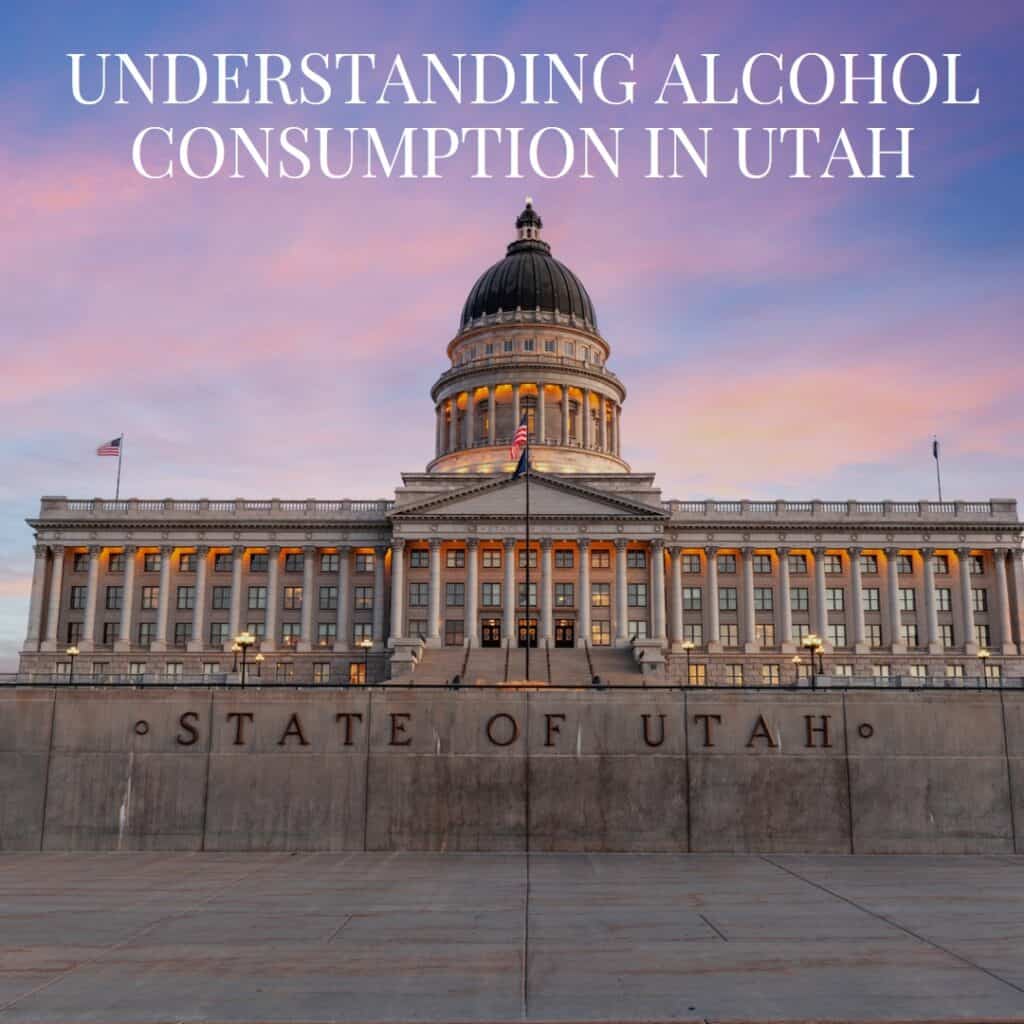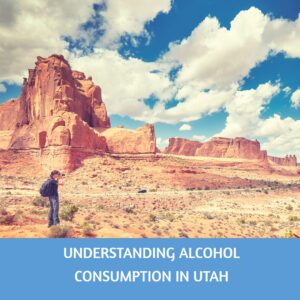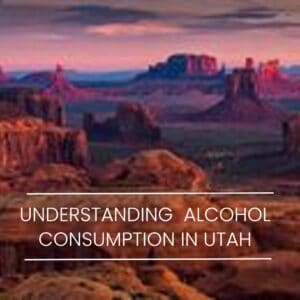A Comparative Analysis of Binge and Heavy Drinking Trends
Alcohol consumption, a topic of both social and public health interest, varies significantly across different regions. Understanding these patterns is crucial, especially in areas with unique demographic and cultural landscapes. Utah, with its distinct social and religious backdrop, presents an intriguing case for examining alcohol consumption trends. This article delves into the patterns of binge and heavy drinking in Utah, offering a comparative analysis with national averages. By exploring these trends, we aim to shed light on the state’s unique relationship with alcohol, highlighting areas of concern and opportunities for public health interventions. Our focus on both binge and heavy drinking provides a comprehensive view of alcohol use in Utah, revealing insights that are vital for policymakers, health professionals, and the general public alike.
II. Binge Drinking in Utah
Definition and Utah’s Trends Binge drinking, defined as consuming a large amount of alcohol in a short period, typically leading to a blood alcohol concentration of 0.08% or higher, is a widespread concern across the United States. In Utah, the pattern of binge drinking reveals intriguing insights. Recent data indicates that certain Utah small areas, such as Salt Lake City (Downtown) V2, Salt Lake City (Avenues), Park City, Salt Lake City (Southeast Liberty), and South Salt Lake, exhibit the highest rates of binge drinking. These areas contrast sharply with others like Provo/BYU, Provo (East City Center), and Orem (East), where binge drinking rates are notably lower.

Comparison with National Averages
When we look at the broader picture, Utah’s binge drinking rates stand out for being notably lower than the national averages. In the year 2021, about 11.7% of adults in Utah were reported to have engaged in binge drinking. This figure is substantially below the Healthy People 2020 goal, which is set at 24.4%. Such a significant difference in rates could be influenced by a range of factors unique to Utah. Cultural and religious aspects prevalent in the state play a crucial role in shaping attitudes towards alcohol consumption. In communities where alcohol use is less normalized or even discouraged, lower rates of binge drinking are often observed. This trend in Utah reflects the impact of these societal influences on individual behavior and lifestyle choices.
Localized Public Health Strategies
The disparity in binge drinking rates across various small areas within Utah highlights the critical need for public health strategies that are tailored to specific communities. It’s not enough to have a one-size-fits-all approach; understanding the unique factors contributing to higher rates in certain areas is key. For instance, areas with higher rates of binge drinking might be influenced by factors such as local social norms, economic conditions, or lack of awareness about the risks of excessive drinking. By identifying these factors, public health officials can develop targeted interventions that are more likely to be effective. These could include community education programs, policy changes, or increased access to resources for alcohol abuse prevention and treatment. Such localized strategies are essential for addressing the root causes of binge drinking and mitigating its health risks on a community level.
Here is a bar chart illustrating the binge drinking rates in various Utah small areas:
This chart highlights the areas with the highest and lowest rates of binge drinking. For instance, Salt Lake City (Downtown) V2, Salt Lake City (Avenues), Park City, and Salt Lake City (Southeast Liberty) show significantly higher rates compared to areas like Provo/BYU, Provo (East City Center), and Orem (East).
I am text block. Click edit button to change this text. Lorem ipsum dolor sit amet, consectetur adipiscing elit. Ut elit tellus, luctus nec ullamcorper mattis, pulvinar dapibus leo.
Similar Article: Alcohol Treatment Centers in Utah

Quick Facts About Binge Drinking in Utah
Binge Drinking Trends in Utah: Binge drinking, characterized by consuming alcohol to the point where blood alcohol concentration reaches or exceeds 0.08%, is notably prevalent in the United States, with Utah being no exception. In Utah, specific areas, including Downtown Salt Lake City, the Avenues area, Park City, Southeast Liberty in Salt Lake City, and South Salt Lake, report the highest instances of binge drinking.
Impact of Alcohol on Mortality in Utah: Annually, around 903 people in Utah lose their lives due to reasons related to alcohol consumption. Notably, Utah ranks as the seventh-highest state in the U.S. for deaths caused by alcohol poisoning.
Financial Implications of Excessive Drinking: The economic impact of excessive alcohol use is staggering. Across the United States, the cost reached $249 billion in 2010, averaging out to about $2.05 per alcoholic drink. Focusing on Utah, the financial burden due to excessive alcohol use was around $1.2 billion in 2014.
Binge Drinking Data from 2011-2020: Over the decade from 2011 to 2020, data collected showed varying rates of binge drinking across different small areas in Utah.
Utah’s Binge Drinking Compared to National Average: In 2021, the percentage of Utah adults who reported binge drinking at least once in the preceding 30 days was 11.7%, significantly lower than the Healthy People 2020 goal of 24.4%. This rate is also considerably less than the national average for binge drinking in the U.S., consistently recorded from 1989 through 2021.
Similar article: A guide to Utah Treatment
III. Chronic Heavy Drinking in Utah
Heavy Drinking Defined
Heavy drinking, a pattern of alcohol consumption that exceeds the Dietary Guidelines for Americans, is defined as consuming 8 or more drinks per week for women and 15 or more for men.
Prevalence in Utah
In Utah, the prevalence of heavy drinking provides a different perspective on the state’s alcohol consumption habits. In 2021, the data revealed that 4.0% of Utah adults reported heavy drinking in the 30 days prior to the survey. This rate is lower than the national average of 6.2% for the same year, indicating a lesser prevalence of heavy drinking in Utah compared to the broader U.S. population.

Age and Gender Distribution The distribution of heavy drinking across different age groups and genders in Utah also presents valuable insights. While similar rates of heavy drinking are observed across gender and most age groups, the 65+ age group shows significantly lower rates. This could be reflective of lifestyle changes, health awareness, or cultural factors influencing older adults in Utah.
Implications for Public Health Understanding the nuances of heavy drinking in Utah, especially in comparison to national trends, is crucial for developing effective public health strategies. It highlights the need for targeted interventions that address the specific demographics and regions most affected by heavy drinking.
Here is a line chart illustrating the comparison of heavy drinking rates between Utah and the United States from 2011 to 2021:
This chart shows the percentage of adults reporting heavy drinking in both Utah and the U.S. over a decade. It highlights that Utah consistently has lower rates of heavy drinking compared to the national average.
Similar article: Alcohol Rehab in Utah
IV. Health and Economic Impacts
Health Risks of Excessive Alcohol Use
Excessive alcohol use, encompassing both binge and heavy drinking, poses significant health risks. These include liver cirrhosis, various cancers, unintentional injuries, violence, and fetal alcohol spectrum disorders. The health implications extend beyond the individual, affecting families and communities.
Economic Burden of Alcohol Consumption
The economic impact of excessive alcohol use is substantial. In 2010, the cost to the United States was estimated at $249 billion, averaging $2.05 per drink. In Utah, the cost of excessive alcohol use was estimated to be $1.2 billion in 2014. These costs are attributed to healthcare expenses, lost productivity, and other societal impacts.
Public Health Concerns
The health and economic impacts of alcohol consumption in Utah highlight a significant public health concern. Understanding these impacts is crucial for developing comprehensive strategies to reduce the burden of excessive alcohol use. This includes not only addressing the direct effects of alcohol consumption but also tackling the underlying factors contributing to these patterns.

V. Preventive Measures and Public Health Strategies
Role of the Utah Division of Substance Abuse and Mental Health
The Utah Division of Substance Abuse and Mental Health (DSAMH) plays a pivotal role in addressing alcohol-related issues in the state. As the primary agency responsible for substance abuse and mental health services, DSAMH provides resources, information, and guidance for prevention and treatment programs.
Evidence-Based Strategies to Reduce Excessive Alcohol Consumption
To combat excessive alcohol consumption, several evidence-based strategies are recommended:
- Increasing Alcoholic Beverage Costs: Implementing higher taxes and prices on alcoholic beverages to discourage excessive consumption.
- Limiting Retail Alcohol Outlets: Controlling the number of places where alcohol can be purchased to reduce accessibility.
- Enforcing Dram Shop Liability: Holding alcohol retailers accountable for harms caused by serving alcohol to underage or intoxicated patrons.
- Restricting Alcohol Access: Maintaining limits on the days and hours when alcohol can be sold.
- Consistent Law Enforcement: Upholding laws against underage drinking and alcohol-impaired driving.
Similar article: Utah Alcohol Addiction Recovery Centers

Screening and Counseling for Alcohol Misuse
Regular screening and brief interventions in healthcare settings can effectively identify and address risky alcohol use. This approach involves a short conversation with patients about their drinking patterns, followed by advice or referrals for further treatment if necessary.
Community and Policy Interventions
Community-level interventions, such as public awareness campaigns and school-based education programs, play a crucial role in preventing excessive alcohol use. Policy interventions, including zoning laws and community norms, also contribute to shaping healthier drinking behaviors.
By implementing these strategies, Utah can continue to address the challenges posed by excessive alcohol consumption, promoting healthier communities and reducing the associated health and economic burdens.
VI. Conclusion – Alcohol Consumption in Utah
Summarizing Key Findings
This article has explored the intricate patterns of binge and heavy drinking in Utah, revealing a landscape that is distinct from national trends. Utah’s lower rates of both binge and heavy drinking, when compared to the U.S. average, reflect the state’s unique cultural and social dynamics.
Importance of Ongoing Research and Public Health Initiatives
The insights gained underscore the importance of continuous research and proactive public health initiatives. These efforts are crucial in understanding and addressing the evolving patterns of alcohol consumption in Utah.
The Role of Community Awareness and Responsible Drinking Community awareness and education play a pivotal role in promoting responsible drinking habits. Encouraging informed decisions about alcohol, understanding its risks, and knowing when to seek help are key components of a broader strategy to mitigate the negative impacts of excessive alcohol consumption.
Final Thoughts As we move forward, it is essential to maintain a focus on tailored public health strategies that resonate with Utah’s unique demographic. By doing so, we can foster a healthier environment where the risks associated with alcohol consumption are effectively managed and reduced.
Check out are article: Is Alcohol a Stimulant or Depressant?
FAQs on Alcohol Consumption in Utah
1. What defines binge drinking, and how prevalent is it in Utah?
- Binge drinking is defined as consuming a large amount of alcohol in a short period, typically leading to a blood alcohol concentration of 0.08% or higher. In Utah, approximately 11.7% of adults reported binge drinking in 2021, which is lower than the national average.
2. How does heavy drinking in Utah compare to the national average?
- Heavy drinking in Utah, defined as consuming 8 or more drinks per week for women and 15 or more for men, was reported by 4.0% of adults in 2021. This rate is lower than the national average of 6.2%.
3. What are the health risks associated with excessive alcohol consumption?
- Excessive alcohol consumption can lead to liver cirrhosis, various cancers, unintentional injuries, violence, and fetal alcohol spectrum disorders, among other health issues.
4. What strategies are being used in Utah to reduce excessive alcohol consumption?
- Strategies include increasing alcoholic beverage costs, limiting retail alcohol outlets, enforcing dram shop liability, restricting access to alcohol, consistent law enforcement against underage and impaired driving, and screening and counseling for alcohol misuse.
5. Why is it important to have community and policy interventions in addressing alcohol consumption?
- Community and policy interventions are vital for shaping healthier drinking behaviors and norms. They include public awareness campaigns, school-based education programs, and zoning laws, all contributing to preventing excessive alcohol use and promoting public health.






